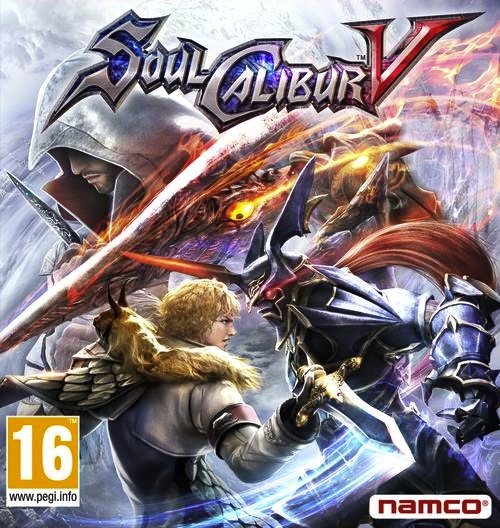
Like many fighting games before it, Namco-Bandai’s latest offering, Soul Calibur V, stirs up a baffling concoction of emotion. The game inspires real excitement with technical depth and impressive polish but goes on to turn the stomach with its depiction of anachronistic gender politics and puzzle diehards with its disregard for the source of its popularity since its inception in 1996—namely, the single player.
The Soul Calibur series has traditionally showcased a wealth of single player modes—Mission Mode, Weapon Master Mode, Tower of Lost Souls—but SCV boasts little more in that department than a three-to-four-hour story mode.
For most fighting games, the single player story mode is something like a side salad at a teriyaki joint—a thoughtful but puzzlingly out of place addition, at its best a bit refreshing and at its worst downright repulsive.
SCV belongs to the unfortunate latter category, and, in the time-honored tradition of the genre, fails to offer any viable explanation as to why everyone wants to hurt everyone else so badly.
Oddly enough, only about one third of the cutscenes are even animated—most of the narrative work is done by a serious of dubious storyboards and dramatic voiceover. Allegedly, the developers were hurting for time in this department, and the results are a little threadbare.
The story—which revolves around the movement of a pair of legendary swords in 17th century Europe—does introduce a couple new faces to the SC canon, but they’re whiny and look too much like Justin Bieber.
One new character, Pyrrha, was so abrasively infantile as to drive this reviewer to give up on suspending his disbelief and take a little outside time. In one signature move, Pyrrha, stumbling and sobbing around the battlefield, grabs her opponent, trips, and pulls him onto her—and, by some miracle, onto her sword—as she falls to the ground, whispering, “Forgive me.”
Which of course brings us to the sexism. Fighting games are the drunken sailors of the gaming world, and not known for their forward-thinking. As such the women of SCV come in three varieties: buxom sex-fiend (the whip-toting Ivy Valentine), naïve, bumbling youth (the sniffly Pyrrha Alexandra) or desexualized man-wannabe (the armor-caked Hilde von Krone).
Most of the men, for their part, look like they’re struggling to get around the place, toting the flour-sacks of muscle mass that hang from their Olympic frames. Like the ladies’ skintight “armor,” the stereotypes are shameless and restrictive.
Unless, of course, the player forgoes the provided models and visits the character creator, one of SCV’s most satisfying features. It is intricate, intuitive, expands its inventory over time, and because custom characters are at no tactical disadvantage (or advantage, as in SCIV) most players tend to eschew the usual suspects and take their hand-crafted avatars online.
And online play is where SCV proves that despite its unfortunate packaging and lack of offline frill, the core substance of the series is intact, if not improved. Online modes are remarkably effortless and lag-free.
Considering that fighting games rely so heavily on precise timing, online play has traditionally been frustrating for fans of the genre, but SCV manages to maintain online the speed and polish of the offline modes. Character movement feels fluid, animations and graphics are satisfyingly smooth, and character balance seems in order, if a little tilted in favor of the faster styles.
In the end, it’s hard to condemn a game with gameplay so finely honed and online modes so thoughtfully crafted, because any game with that much going for it should be considered a success.
It’s hugely fun to play, so just don’t think too hard about the practicality of the characters (or their improbable physiques)—you’ll end up doing more head-scratching than bashing.


